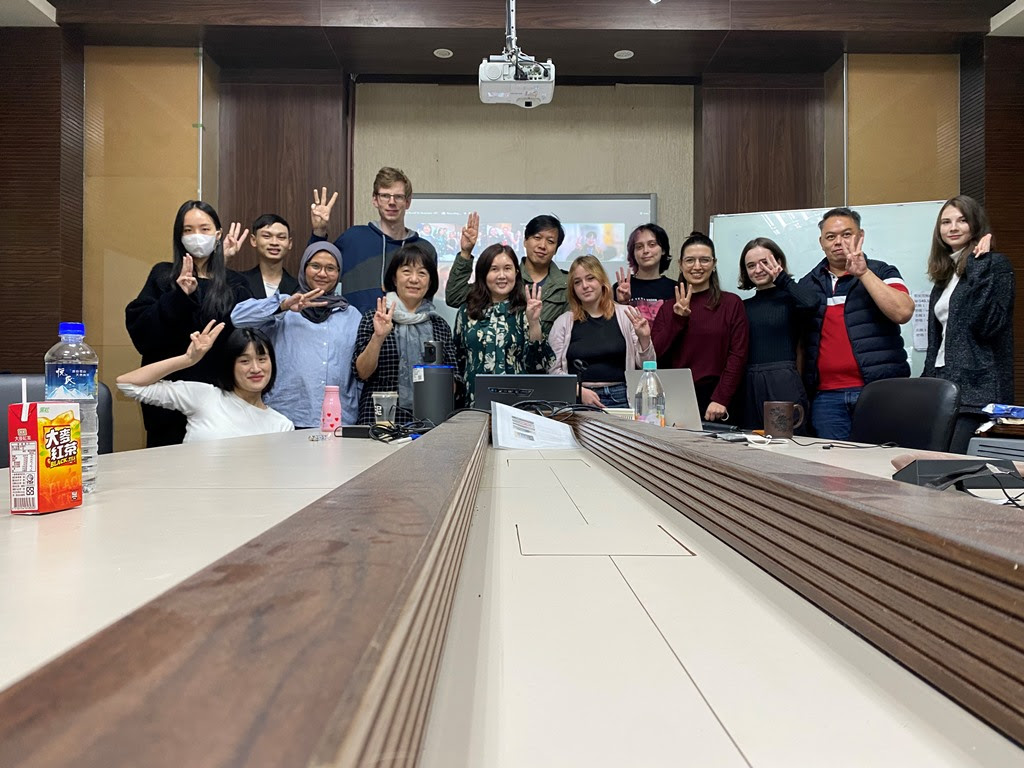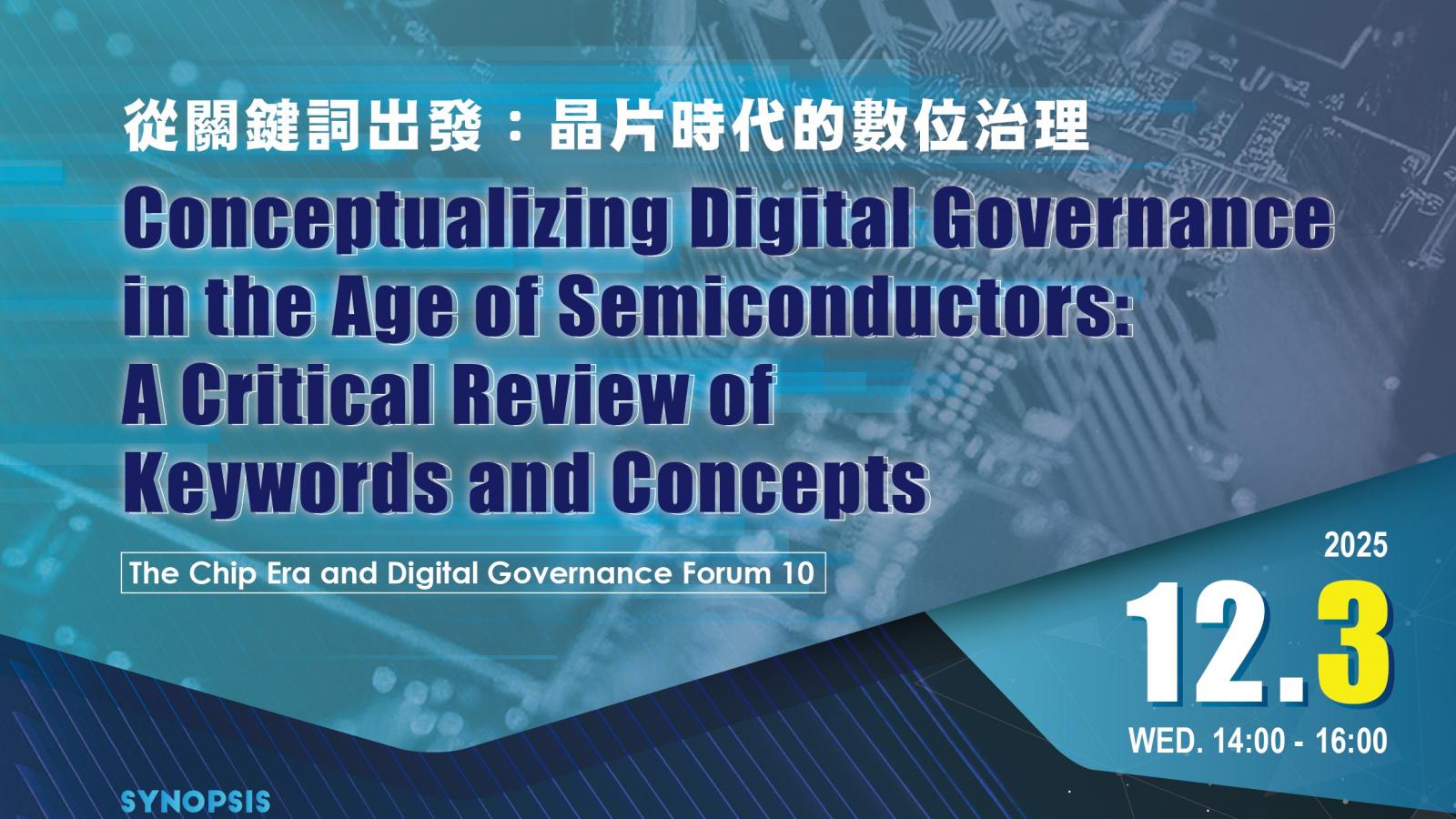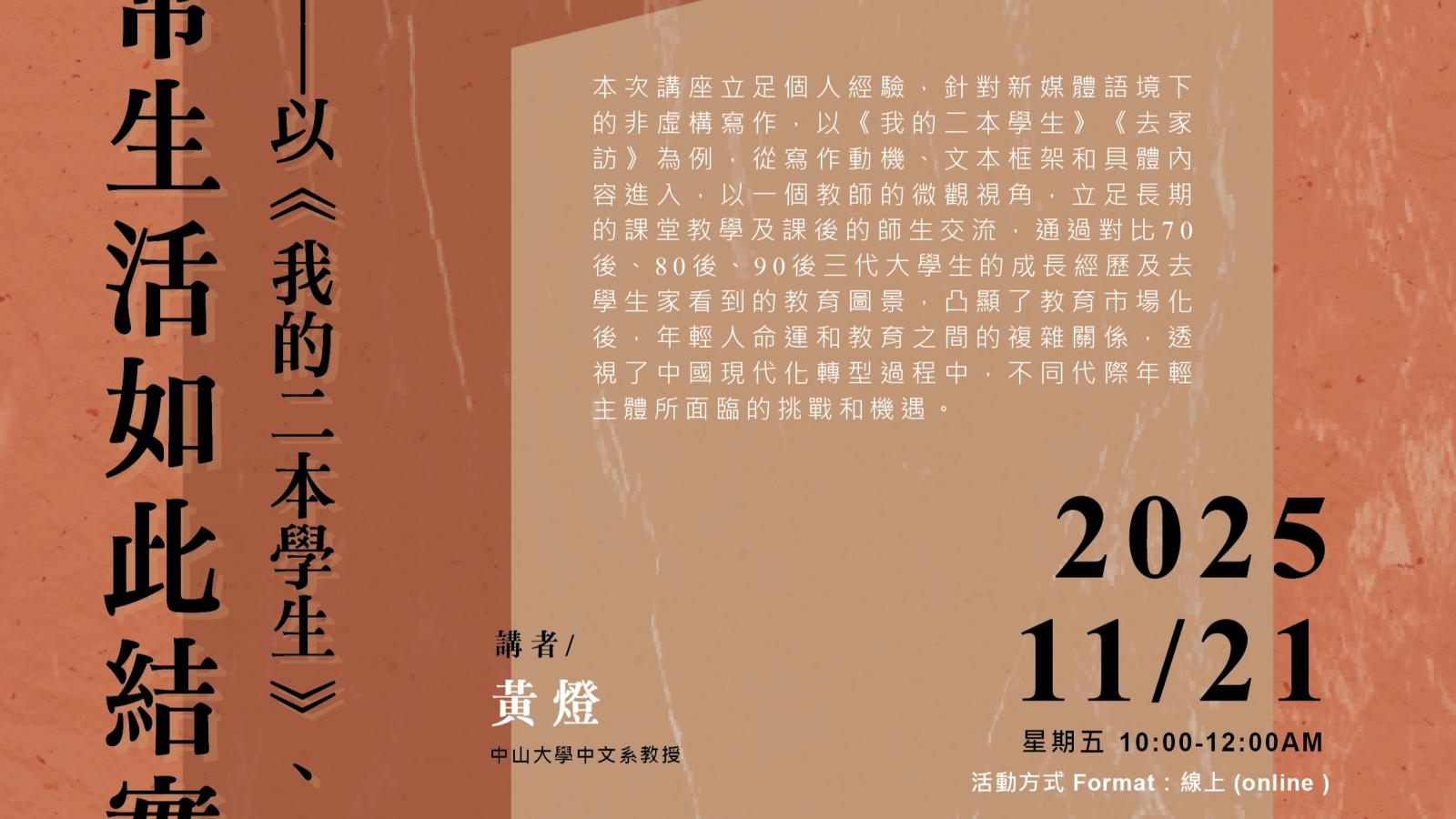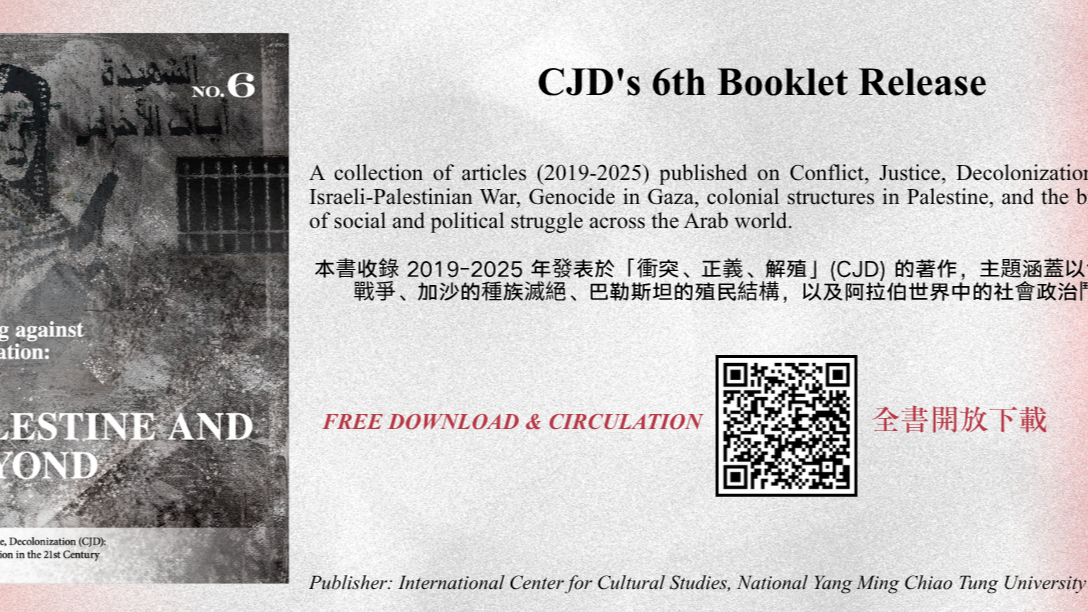

Activity Report: Topic1 : Strong Country, Masculinity, and The Castrated Idol Industry in China / Topic2 : The Infrastructural Turn in Film and Media Studies: Inter-Asia Perspectives
2023-03-01
Date: Dec. 12 , 2022
Time: 13:30–16:30 (Taiwan Time); 6:30–9:30 (Central European Time)
Venue: R106, HA Building 2, NYCU, 1001, Daxue Road, East District, Hsinchu City, 3001
Speaker 1: 戴瑜慧 Yu-Hui Tai (Associate Professor, Department of Communication & Technology, National Yang Ming Chiao Tung University)
Speaker 2: 楊子樵 Lawrence Yang (Assistant Professor, Institute of Social Research and Cultural Studies, National Yang Ming Chiao Tung University)
Writer: Serena Di Maria (NYCU IACS Student)
Lecture on “Infrastructure and Media” by Professor Lawrence Yang
In this intervention Lawrence Yang presents the recent trend of scholarship tackling the question of infrastructure from the perspective of Cultural Studies and Media Studies.
One of the main problematics that has been brought to attention along the course of the presentation is how infrastructure relates to the question of form. From a methodological point of view, the main issue is how to ask aesthetic questions related to such a technical subject as infrastructure, and why would these questions be of any significance from the point of view of Cultural Studies.
The first part of the talk focused on how to think about infrastructure analytically. From the point of view of the Marxist circulation structure, infrastructure appears as an ambivalent element in between, which is neither part of the raw material nor of the product but is involved in every process of production, circulation and communication. It can be thought of as an interface between the processes of production and consumption. Moreover, infrastructure involves both human and non-human elements since, in order to function, it requires not only a material base, but also people’s expertise, skill, mentality.
To illustrate how infrastructure can be deeply embedded into aesthetic and cultural problematics, Yang mentioned several examples among which is the use of “hole bricks” for the construction of buildings during the ’50 and ’60 in Taiwan. This building material, imported from the U.S. military force during the Cold War, was similarly used in Okinawa, the U.S’s largest military base in Asia. Today the shape of this particular material is boosted visually in the design of the façade of the Okinawa Prefectural Museum: an example of Cold War technology translated into aesthetic display.
As this example suggests, many layers of questions can be asked about infrastructure: historical, colonial, political and environmental questions, as well as cultural and aesthetic.
One of the research trajectories presented in this regard is the study of the role of infrastructure as related to cinema, as part of Professor Yang's research itself focuses on government-sponsored film production in Taiwan during the Cold War. Infrastructure that supports the visual media is here regarded as an important part of the propaganda apparatus of the nationalist government.
Early scholarship since the 1920s had already started to study propaganda film technology, regarded as a “massive orchestration of sound and images into political purposes”, bringing also attention to the role of infrastructure. One such scholar is the German philosopher Sigfried Kracauer, who studied the history of German film. The mobilization of the “aesthetic senses” through the film technology involves the orchestration of the lighting, projection system, electricity, the building of the walls and settings, the mobilization of labor (performers but also technicians, ticket sellers or those who build the architecture to support the show every day). Therefore, the main point conveyed in this section of the talk is that studying film does not only concern the analysis of what happens on the screen (a kind of “close readings”), but also of what materially and technically supports the representation on the screen and who has the power to mobilize the resources required for it.
More recently some scholars have taken up the question of infrastructure in media studies. The ones mentioned are:
These latter studies try to uncover what kind of network of “techno-politics” is built around a certain type of infrastructure. As concerns more specifically the study of infrastructure in relation to aesthetics, another important scholar mentioned is:
In the context of SouthEast Asia, questions about infrastructure are entangled with the question of colonialism. The difficulty that has been brought to attention in this case is whether it is possible to carry out a decolonizing project while engaging with an infrastructure built by the former colonizer.
For example, Jasmine N. Trice traces an epistemology of the body in Manila across the history of film and media. One of her findings is that a certain idea of physical beauty and personal hygiene, as conveyed through film magazine advertisements, was intertwined with the place of movie theaters in the context of colonial urban governance and its nationalist discourses. Her research documenting a wide range of materials (print culture, film, photographs, older journals, newspaper, advertisements) is a good example of how this field of investigation might require going into the archives of multiple different sources.
To conclude, after the introduction of a good sample of related scholarship in order to highlight some of the existing topics and methodologies of research in this field, the main difficulties that scholars of Cultural Studies who want to engage with it encounter were highlighted:
Lecture on “Strong Country, Strong Men: Strong Country, Masculinity and the Castrated Idol Industry in China” by Professor Yu-Hui)
In the second intervention, Professor Yu-Hui Tai presented on the topic of the relation between body politics and nationalism in China’s policy of media control, a policy framed by an equation between the strength of a country and the performance of a strong masculinity by its male subjects. Particular attention was given to the case of the “Castrated Idol Industry”, which has had a short life of four years (from 2018 to 2021) because of the increasingly strict regulations imposed on bodily representations of male idols through the media by the Chinese government.
The talk was structured in two sections, exposing two main problematics.
The first problematic concerns the expansion of the Chinese media market along the trajectories of globalization and regionalization. China’s media productions have gained an increasing influence in the regional market which comprehends Hong Kong and Taiwan. While HK’s film industry is already under CCP's direct control, Chinese dramas and variety shows have become extremely popular products of consumption in Taiwan. With China constituting the second largest market in the world, it also attracts foreign companies, including those from Hollywood. However, foreign companies and artists or idols who want to enter the Chinese market are faced with a set of specific local regulations that have to be respected in order to avoid retribution. Many of these regulations require self-censorship on politically sensitive issues such as prohibition to criticize the CCP, to mention the three Ts (Tibet, Taiwan, Tiananmen) and to show support for the HK and Uyghur protests, along with the imperative to respect the “One China policy”. Whenever one of these rules is breached, a regular pattern of consequences can be observed: firstly, the case is reported (the CCP encourages report culture so that the whole world becomes a panopticon prison); secondly, the public figure receives internet bullying (not only on media platforms within the China Firewall such as Weibo but also on those outside such as Facebook or Instagram); thirdly, the person has to delete the “alleged” item and make public apologies (to be published on all social media within and without the China Firewall). The main argument concerning this point is that over time, this pattern has become an informal cultural policy whereby subjectivities are constructed (mainly by inducing acts of self-censorship) and that the question of who controls communication through media in the global market along with the relations of power behind it deserve further analysis and attention.
The second problematics concerns the increased attention to body politics in the control of the domestic media industry by the Chinese government. In recent years an increasingly severely regulated institutional framework has emerged for the control of bodily expression of gender identity in China. Behind this trend is the anxiety over the fact that a weak masculinity is an alarming symptom of a weak country, which emerges through the discussion of numerous cases during the presentation. The proliferation of figures of effeminate masculinity through the media with the popularization of the “castrated idle” industry since 2018 in China, has been a matter of concern first in the public opinion, as some cases of internet bullying against effeminate idols show, only to gradually enter the political debate and spark a series of legal interventions to stop the trend. In official government sources the trend of “sissy boys” has been depicted not only as a “sick aesthetic”, but also as “having a negative impact on young people” to the point of engendering “the survival and development of the Chinese nation”. Consequently, by the end of 2020 the Chinese government had implemented new measures in the sphere of education aimed at “intensifying efforts to improve the quality and ability of physical education teachers”, “paying more attention to the cultivation of students’ masculinity”, “adding more male teachers in kindergarten, primary school and middle school”. In response to such increasingly strict cultural policy, variety programs engaged in the industry of “idol production” (which had been largely imported from South Korea) adopted strategies of localization, trying to emphasize both the masculinity of the idols and the “Chineseness” of the cultural and aesthetic values conveyed through the show. Despite this, since 2021 the production of this kind of variety shows has been prohibited altogether. Professor Tai argues that three main concerns best explain this move:
1) The CCP is worried about the organizational power of fans
2) Fans’ love for their idol is in conflict with the devotion that should be reserved to the political leader (Xi Jinping), since a “role model is more important than an idol”.
3) The increasingly restrictive body politics has to be read in the larger contest of China’s policy of military strengthening. The government wants to cultivate a generation that is ready to fight and, therefore, is determined to oppose the emasculation of young men.

近期新聞 Recent News

Report|Conceptualizing Digital Governance in the Age of Semiconductors: A Critical Review of Keywords and Concepts
2025-12-03
more

New Publication | Writing against Occupation: Palestine and Beyond (CJD Booklet No.6)
2025-11-12
more